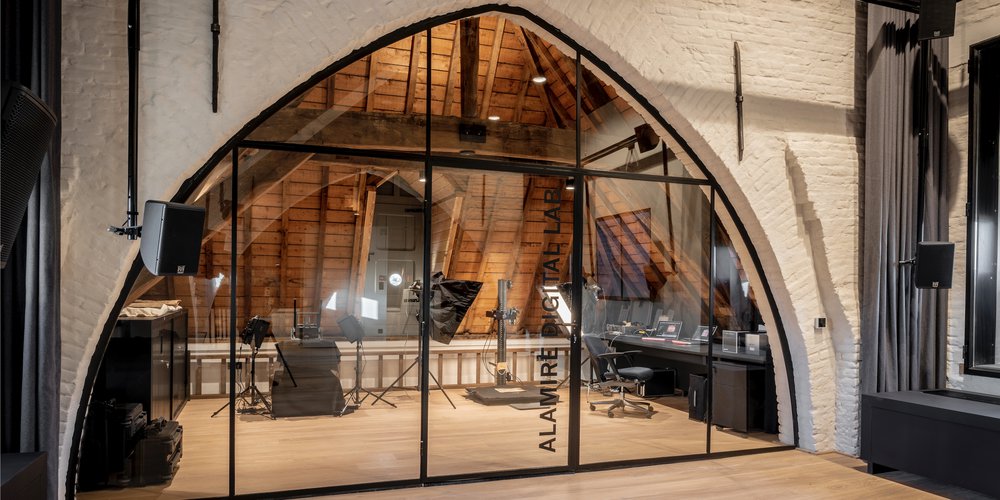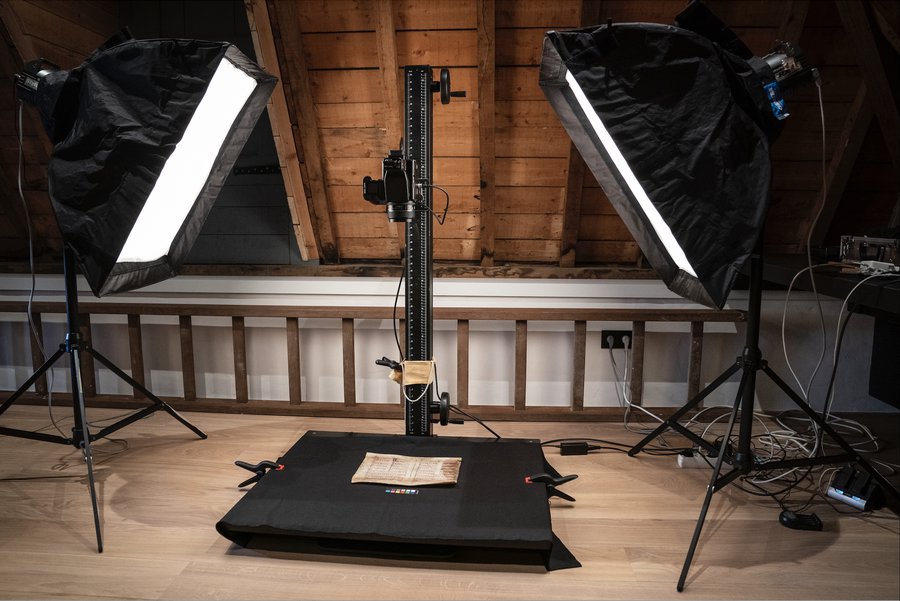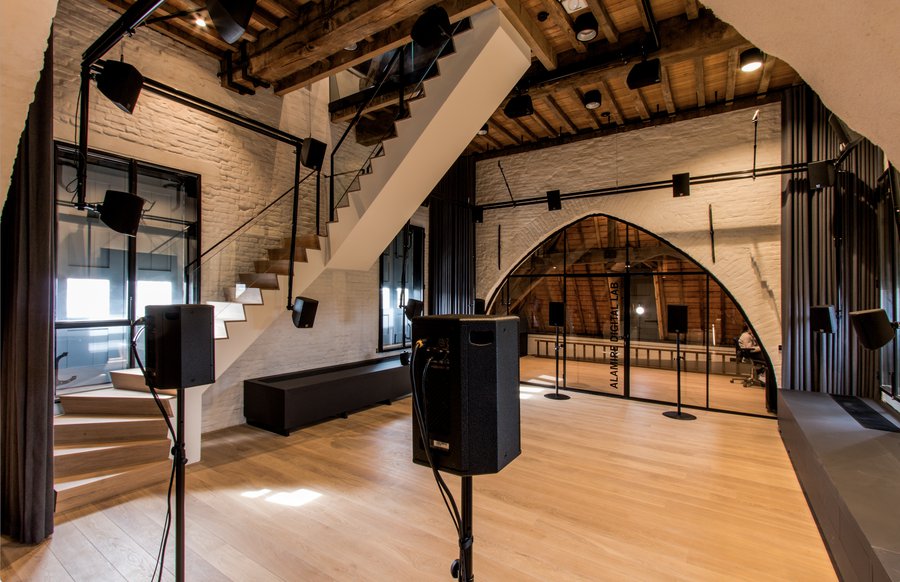Alamire Digital Lab & Alamire Sound Lab

ALAMIRE DIGITAL LAB
The Alamire Digital Lab (ADL) is a high-tech centre for digitizing musical heritage. This mobile laboratory is equipped with the most advanced and up-to-date equipment (cameras, copy stand, book cradle, lighting, and lenses), allowing precious and vulnerable sources—both manuscripts and printed books—to be photographed according to the strictest standards and quality requirements. The resulting images (150 megapixels) offer an opportunity for an innovative scientific approach to heritage material due to their unparalleled sharpness and incomparable precision.
We use the latest technologies to unravel the complexities of polyphony, to get as close as we can to the soul of the music and to keep it fresh for listeners a hundred years from now.

The mobile nature of the equipment is a crucial factor because it allows the sources to be digitized in situ all over the world. This offers considerable added value compared to the heritage institutions that have to limit their activities to their own collection. The fact that ADL can be used without geographical restrictions enables the Alamire Foundation to select the sources not on the basis of their physical location, but in function of their (research) relevance. The functioning of the ADL illustrates the intrinsic link between digitization and research: the photographers and assistants are all musicologists, professional musicians and/or manuscript experts. Besides ensuring that choices made during the photography process can be attuned better to the final results expected of the images, this means that the autopsy of the manuscript is done immediately, in the place where digitization is carried out.
ADL is the main source for the images in the Integrated Database for Early Music.

ALAMIRE SOUND LAB
In the high-tech sound lab at the Library of Voices, polyphony is analyzed and practical research is conducted through the real-time virtual acoustic manipulation of live music performances. The results demonstrate the impact of the acoustics of historical spaces (some of which no longer exist) on the music intended for those spaces.
The Alamire Analytical Sound Lab focuses on the layered texture of polyphonic music. The lab's technological infrastructure, a 20-speaker array in horizontal arrangement combined with a real-time auralization processor and a high-resolution touch screen, makes it possible to digitally view, listen to, annotate, and analyze the individual voices of polyphonic music. Compositions can thus be unraveled and the individual voices that make up the polyphonic texture studied in an experimental framework.
The Alamire Foundation employs some of the very latest science and technology. Only by doing that can we revive the rich musicality of the work and crack the code left behind by these creative 15th and 16th century composers.

The Alamire Interactive Sound Lab has been conceived on the basis of enquiries into the relationship between the source, performance and the historical spaces where the polyphony being studied was originally heard. Since many of these buildings no longer exist or have undergone serious changes over time, this practical research can only be carried out with the help of innovative auralization techniques. ESAT-STADIUS, Centre for Dynamic Systems, Signal Processing, and Data Analysis at KU Leuven, is the partner of the Alamire Foundation, and the PhD research Spatial Recording, Processing and Auralization of Church Acoustics within the FWO/SBO project The Sound of Music acts as a pilot project.
The Alamire Interactive Sound Lab has a high-resolution screen that is used as a digital music stand, six microphones, an array of 28 speakers, and a processor that makes three-dimensional auralization possible. The speaker array here is three-dimensional to make auralization possible both vertically and in the azimuth. This is crucial, because church acoustics are characterized by relatively strong acoustic reflections from the ceiling.

The Alamire Interactive Sound Lab also uses the sources digitized by the ADL and available through IDEM as its starting point. A source is displayed at actual size on a digital music stand. An ensemble of singers sing from the source, just as their historical predecessors would have done. While they are performing their interpretation from the historical source, the sound is recorded and processed, and the historical acoustic information from a specific place is added in real time by the speaker array as an extra layer supplementing the sung music. This in turn influences the performance itself. The addition of an extra acoustic layer to a live performance is a form of Mixed Reality.
The Alamire Interactive Sound Lab makes it possible to study the parameter of acoustics in an innovative way, with a view to enabling a historically informed performance practice.
